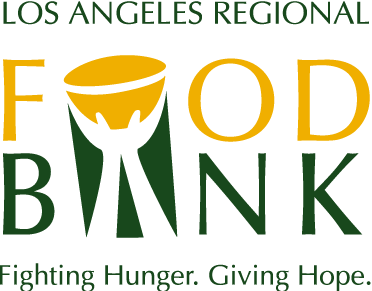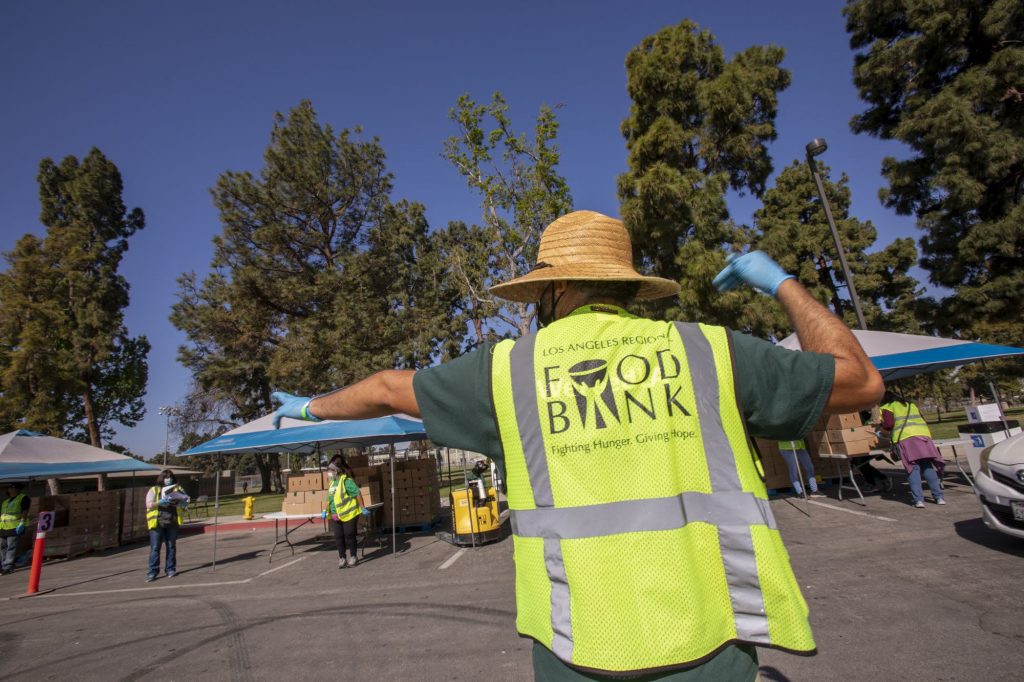The Food Bank in the Late 1980’s and Early 1990’s
The Food Bank in the Late 1980’s and Early 1990’s
In 2023, the Los Angeles Regional Food Bank celebrates 50 years of service to Los Angeles County in the fight against hunger. As the year progresses, we will tell more of the Food Bank’s story leading up to the present day. Here is what has been published so far:
The Los Angeles Regional Food Bank
While the Food Bank has been operating since 1973, the name we know today, the Los Angeles Regional Food Bank, was not adopted until 1989, under Doris Bloch’s leadership.
The Move to South Los Angeles
In 1988, the Food Bank launched a capital campaign to buy the land and build a 55,000-square-foot distribution center at 1734 East 41st Street in Los Angeles, where the Food Bank’s headquarters are still located. The new Food Bank would be called a lifeline for the future.
 The logo at the time included sheaves of wheat waving in the wind, and “Foodbank” was still one word. Still, in the late 1980’s, this new distribution center became the epicenter of food rescue and charitable food distribution in LA County.
The logo at the time included sheaves of wheat waving in the wind, and “Foodbank” was still one word. Still, in the late 1980’s, this new distribution center became the epicenter of food rescue and charitable food distribution in LA County.
 Responding to Two Major Historical Events
Responding to Two Major Historical Events
Food volume continued to increase in the 1990’s as more food donors partnered with the Food Bank and additional partner agencies were recruited throughout LA County. The Food Bank and its partner agency network also responded to two major events in the 1990’s.
1992 LA Riots
The LA Riots erupted in Los Angeles in 1992 following the acquittal of four police officers on charges of excessive force in the beating of African-American motorist Rodney King. The riots lasted for six days, during which widespread looting, arson, and violence occurred, resulting in 63 deaths, over 2,000 injuries, and an estimated $1 billion in property damage. The riots highlighted deep racial tensions and socio-economic inequalities in Los Angeles and sparked national conversations about police brutality and systemic racism.
The LA Riots significantly impacted food insecurity in the affected areas. They occurred in predominantly low-income neighborhoods, where many residents relied on small businesses and corner stores for daily necessities, including food. The looting and destruction of these businesses left many residents without access to food and other essential supplies. In response, community organizations, including the Los Angeles Regional Food Bank and its partner agencies, and government agencies worked to provide emergency food assistance to those affected by the riots. The disruption to the local food supply chain and the long-term economic impacts of the riots on the affected neighborhoods meant that food insecurity remained a significant issue in the years following the unrest.
1994 Northridge Earthquake
The Northridge earthquake occurred on January 17, 1994, and was a powerful earthquake that had a magnitude of 6.7 and caused widespread damage to the region’s buildings, roads, and infrastructure. It resulted in at least 57 fatalities, thousands of injuries, and an estimated $20 billion in property damage. The quake was particularly damaging to the San Fernando Valley area of Los Angeles, where many older buildings and infrastructure were not constructed to withstand an earthquake of that magnitude.
The earthquake caused significant damage to infrastructure and buildings, including supermarkets and grocery stores, which disrupted the food supply chain for many communities. This made it difficult for those affected to access food for some time following the earthquake. The earthquake also caused many residents to lose their homes or be displaced from their residences, forcing them to rely on emergency shelters or assistance from relief organizations, including the Los Angeles Regional Food Bank and its partner agencies, for their basic needs, including food. The earthquake’s economic impact also resulted in many people losing their jobs or experiencing reduced work hours, which further compounded food insecurity in the area.
Both events demonstrated the importance of the Food Bank and its partner agencies, which are a critical part of the social safety net in “normal” times for people who struggle to make ends meet but are also essential in times of emergency.







